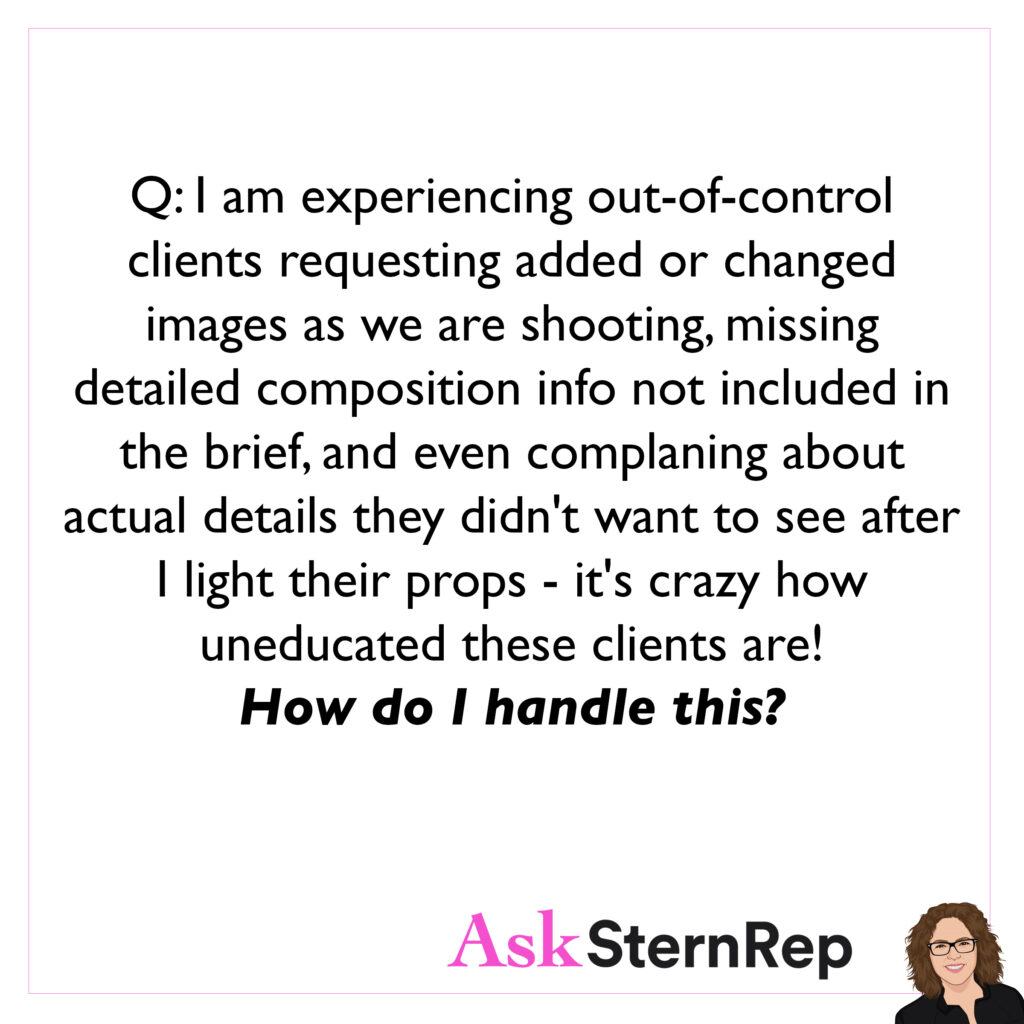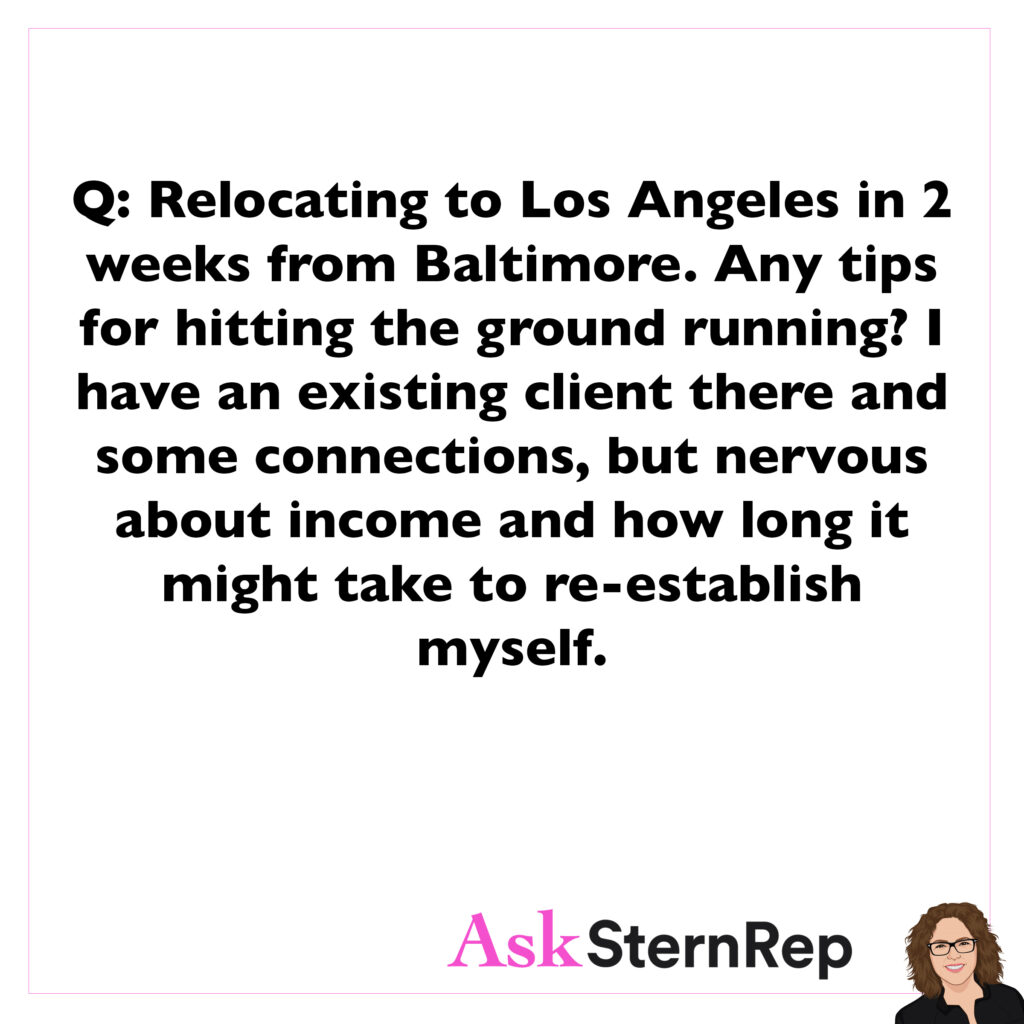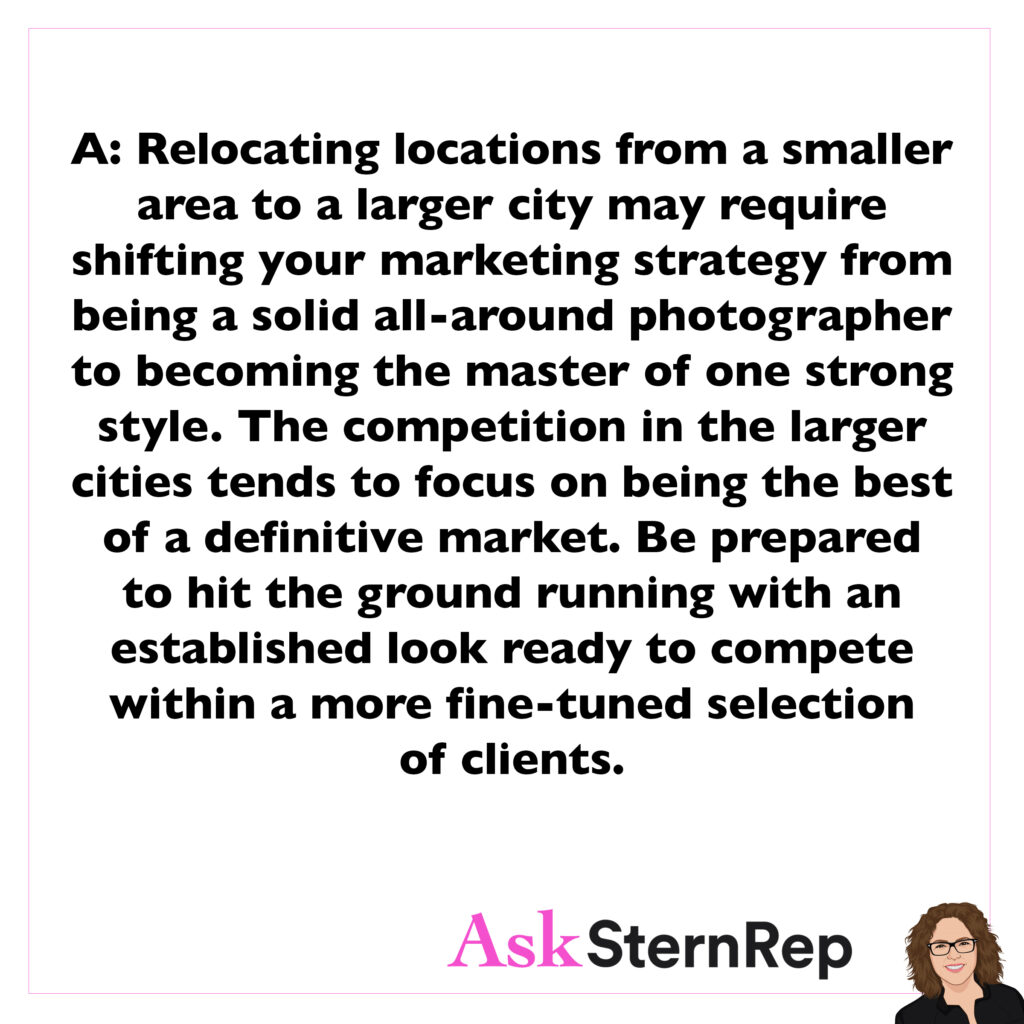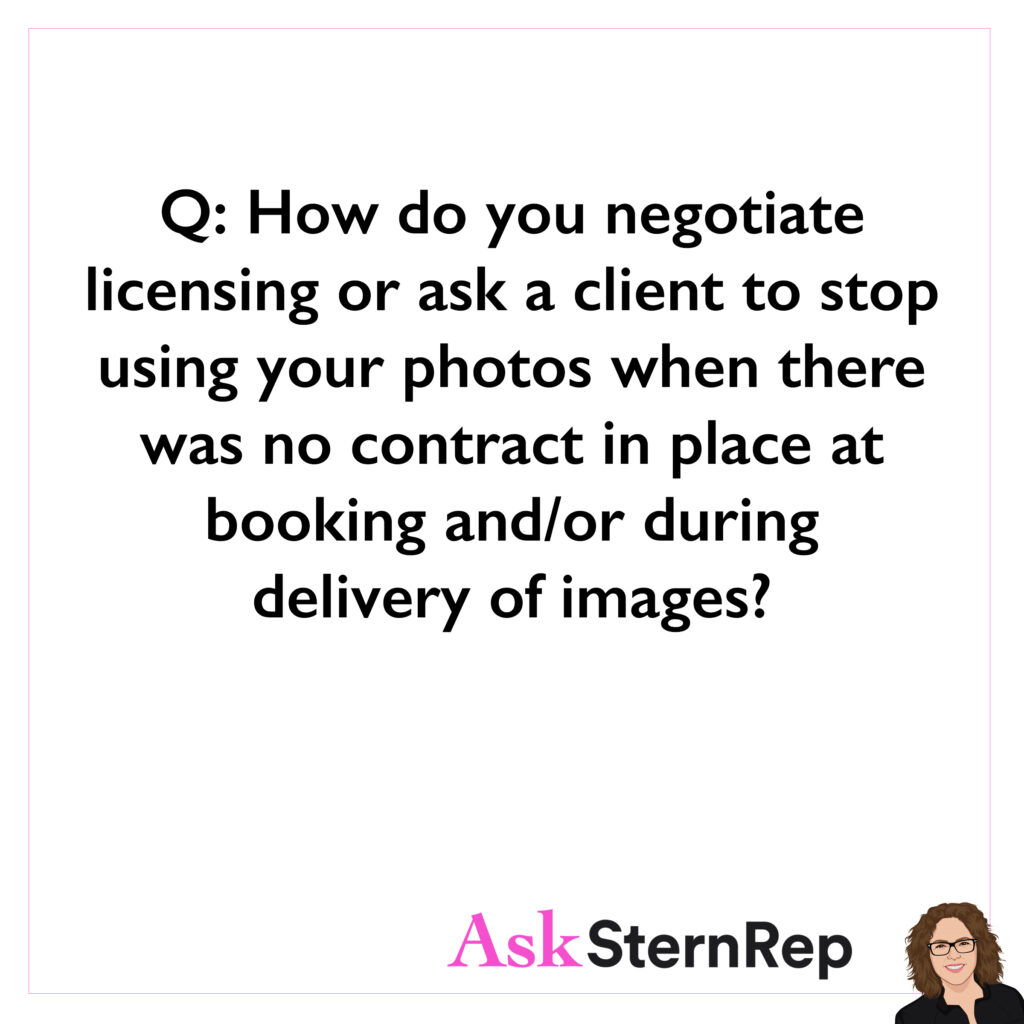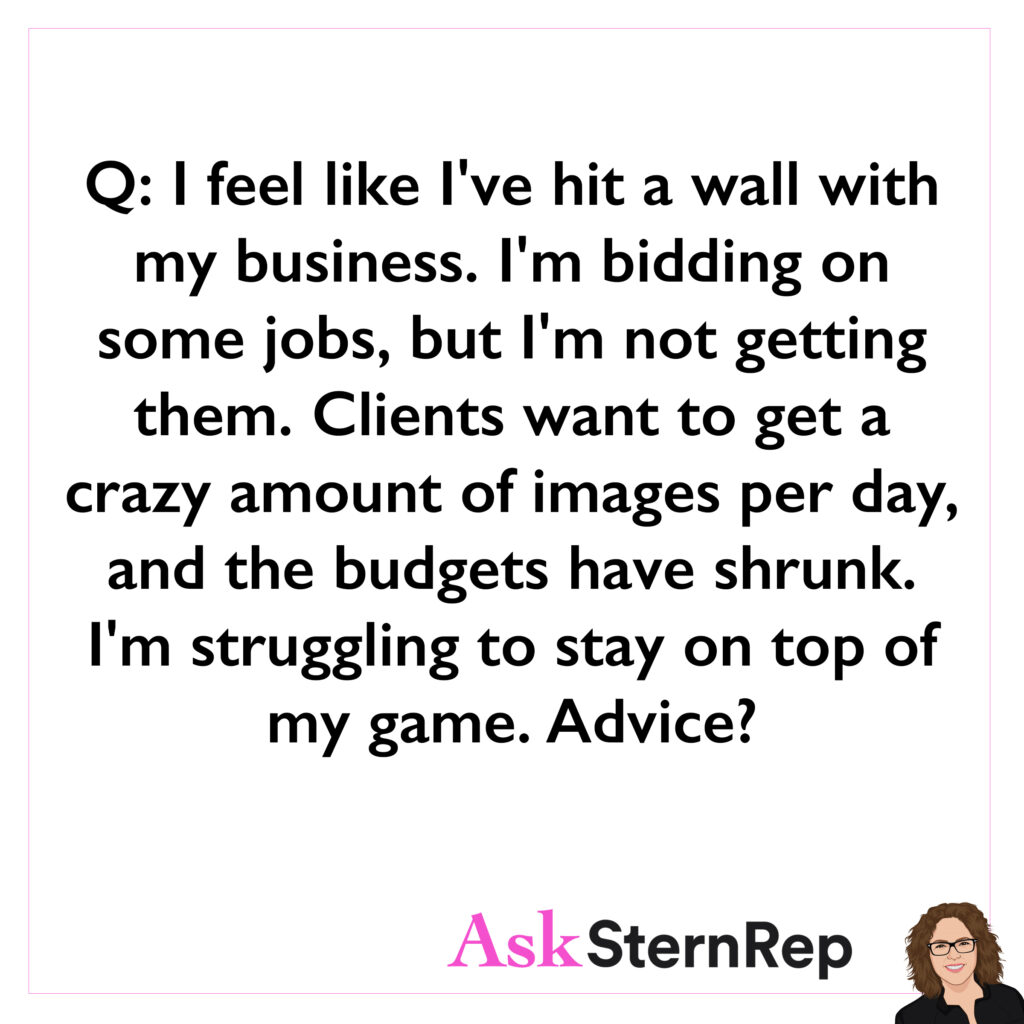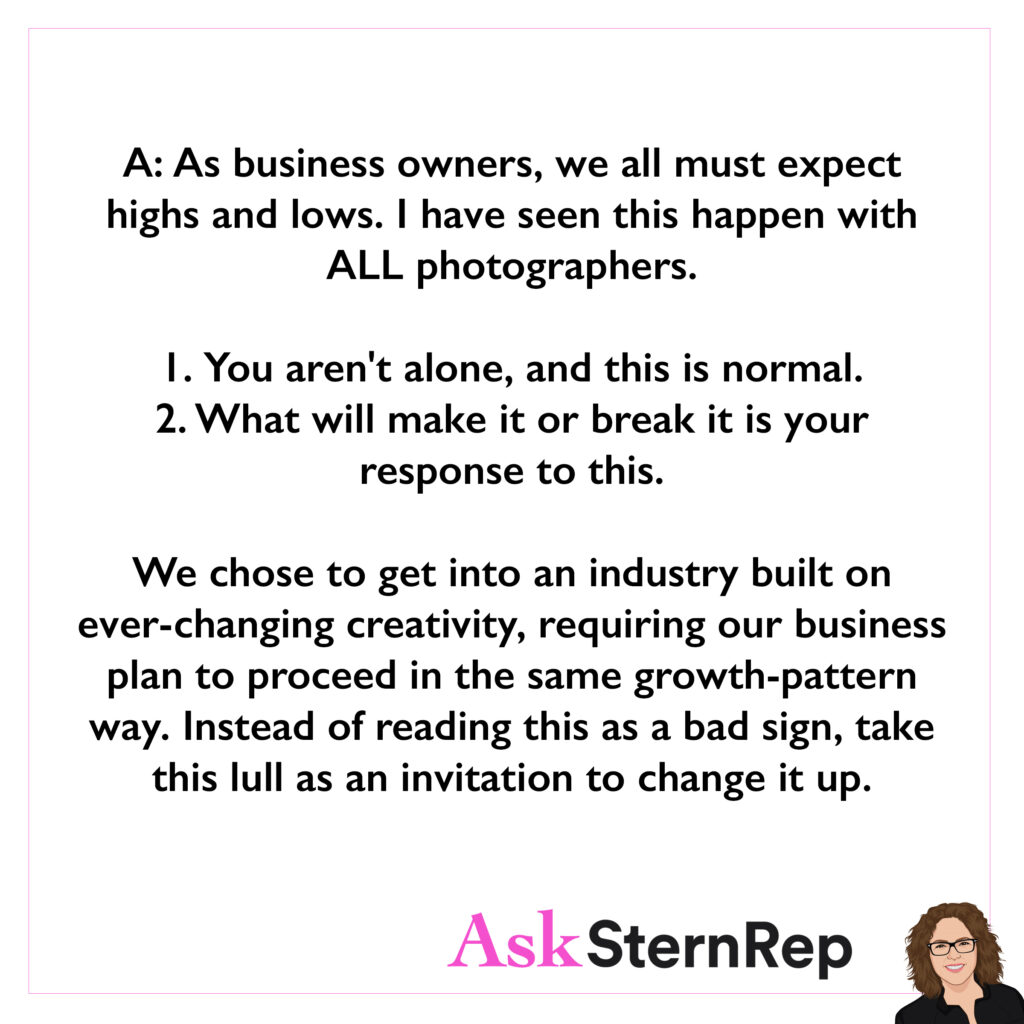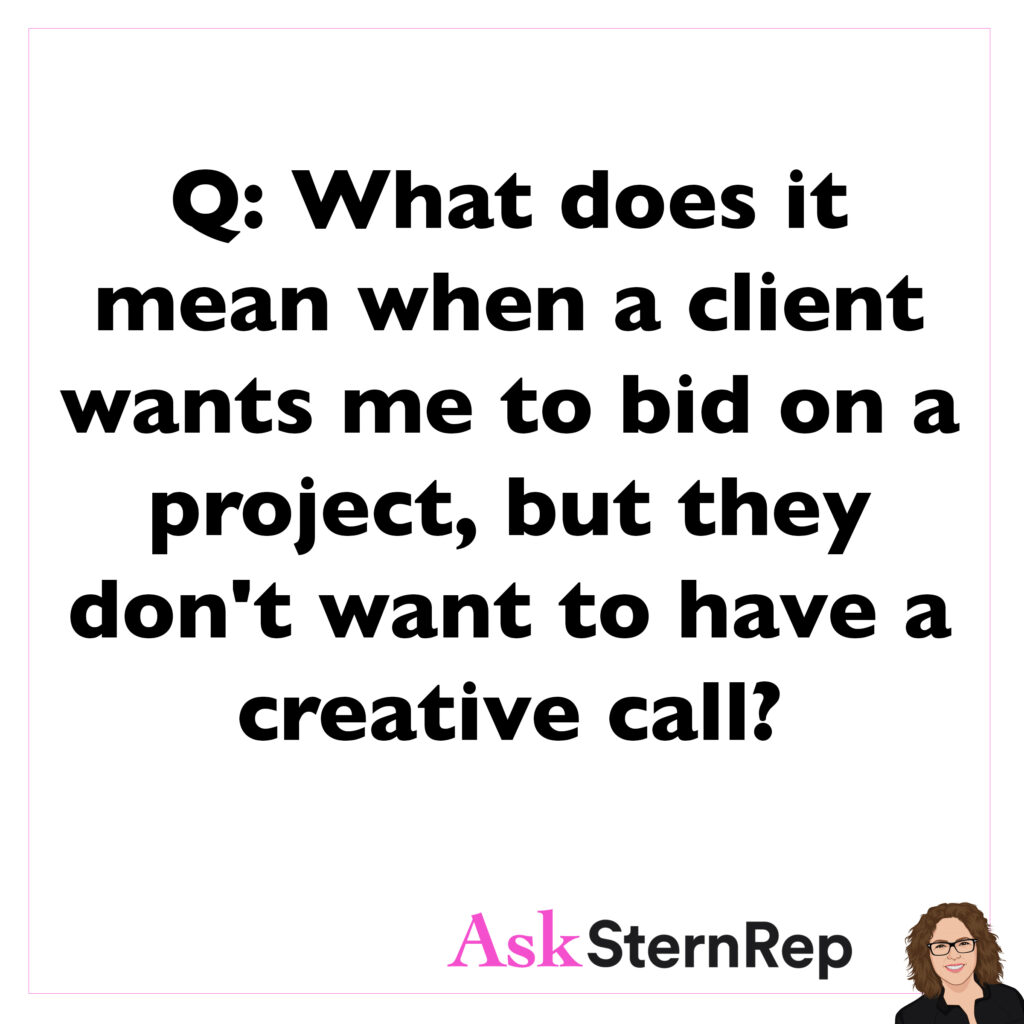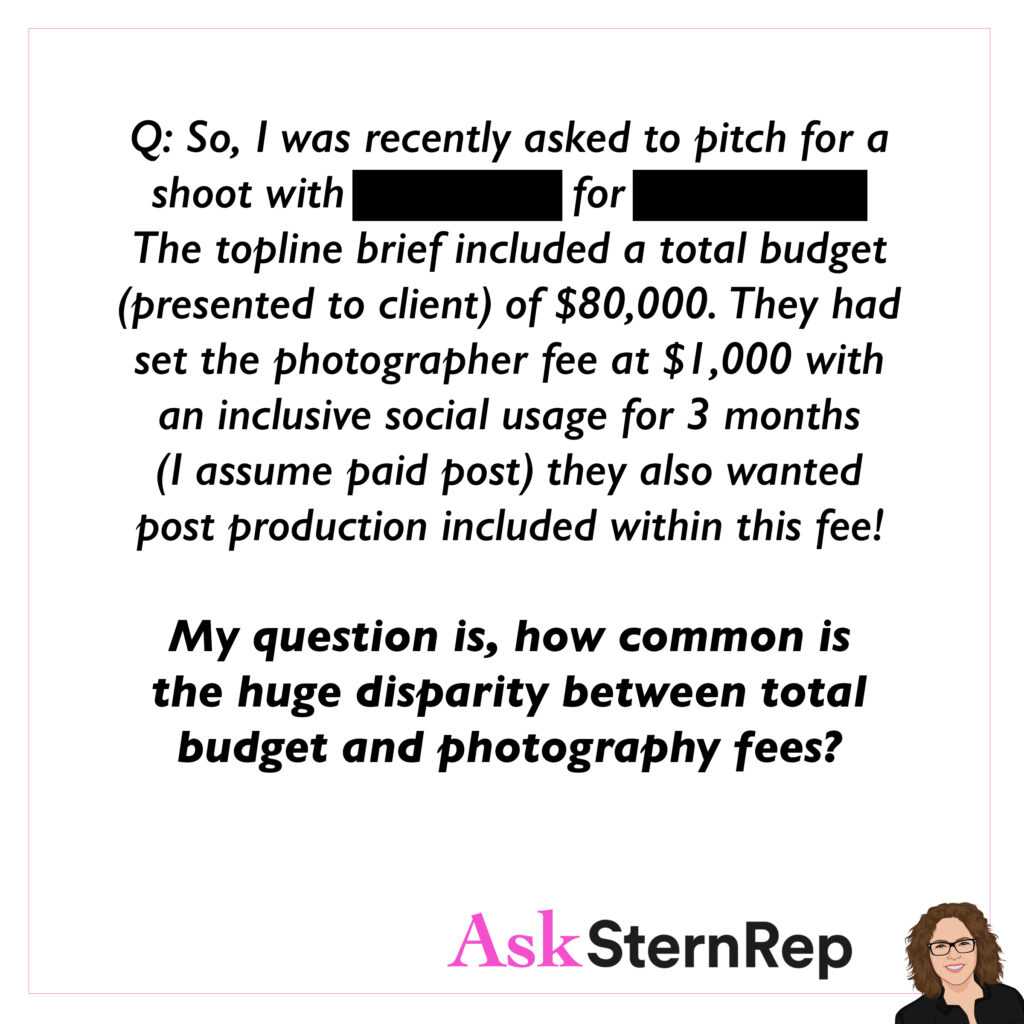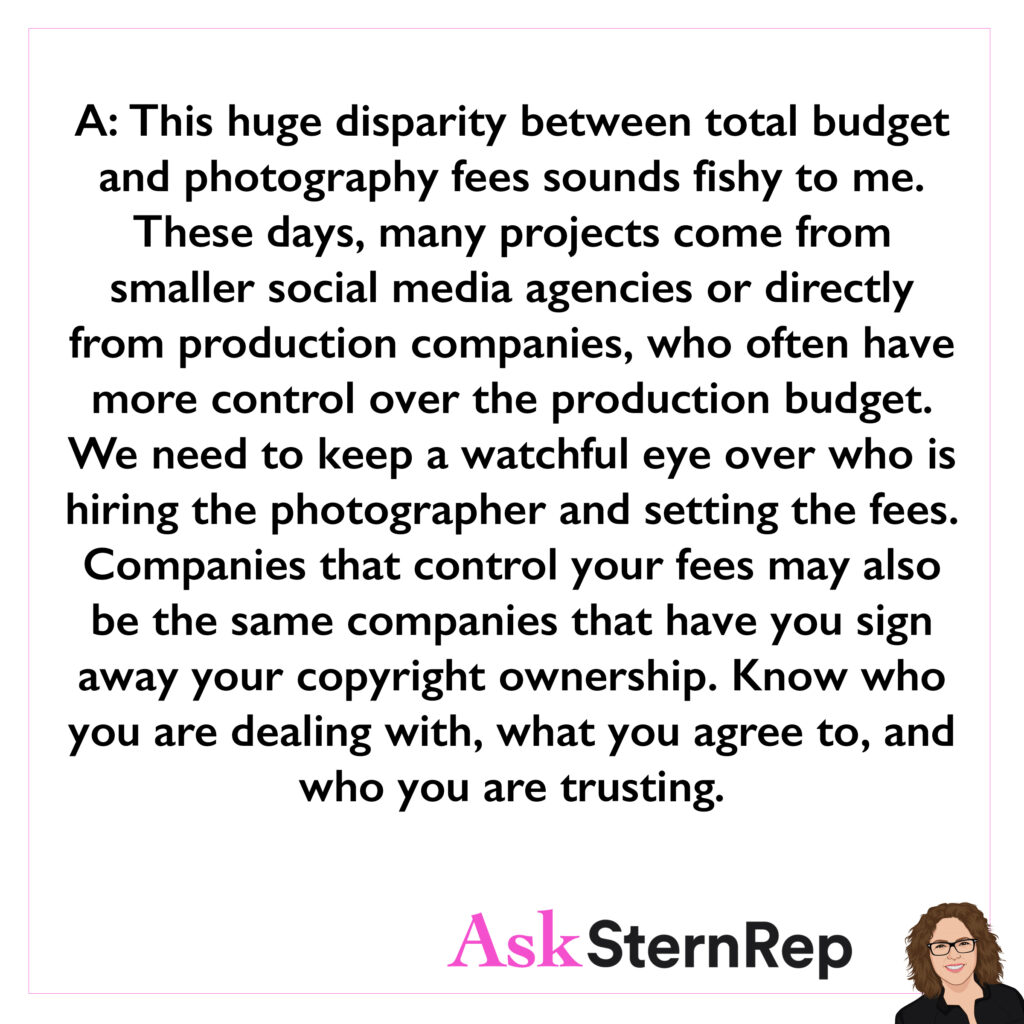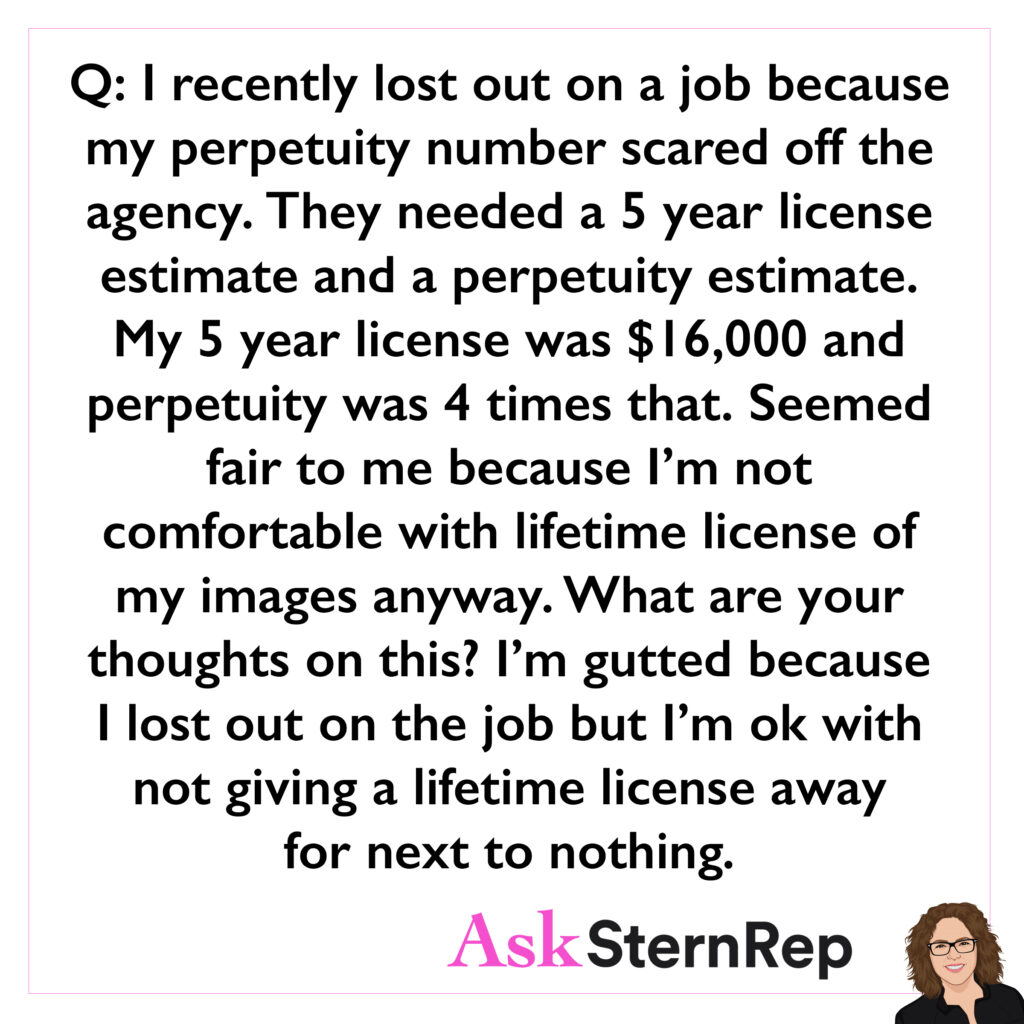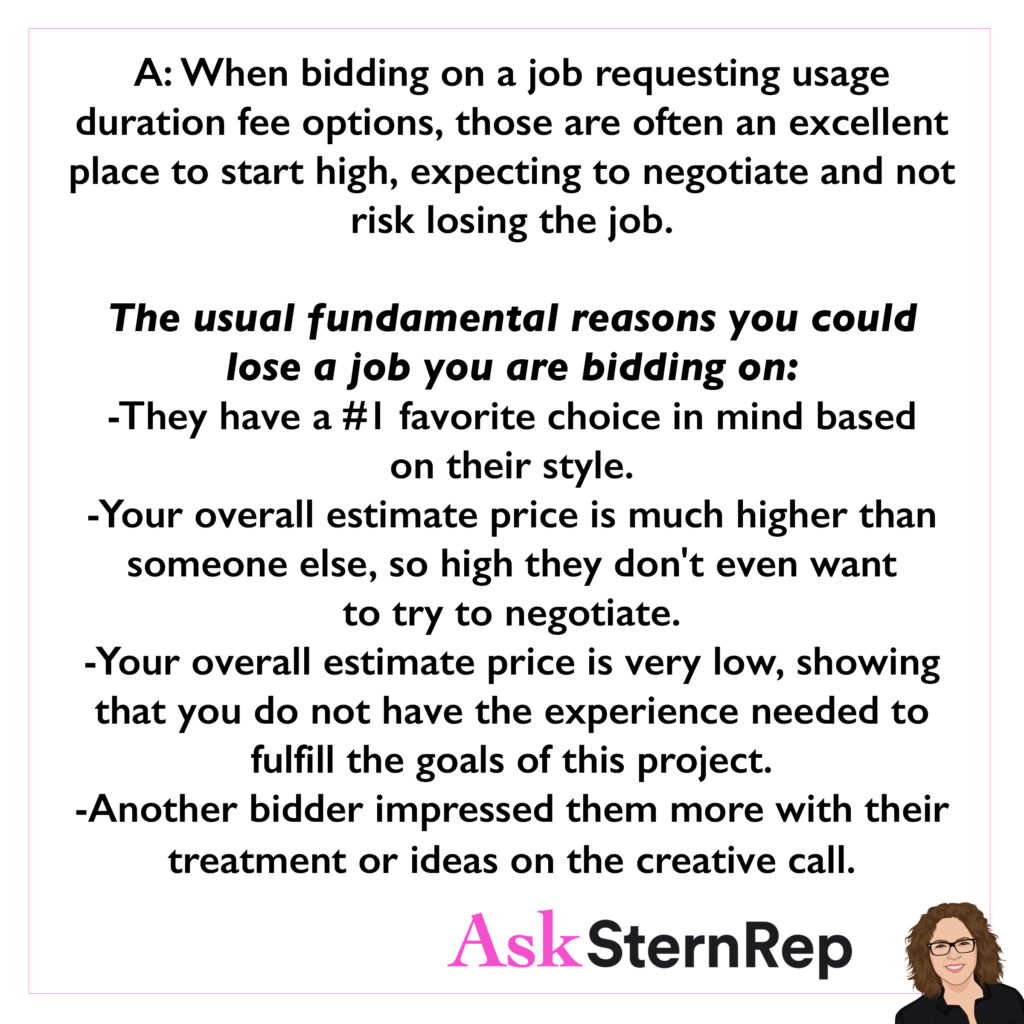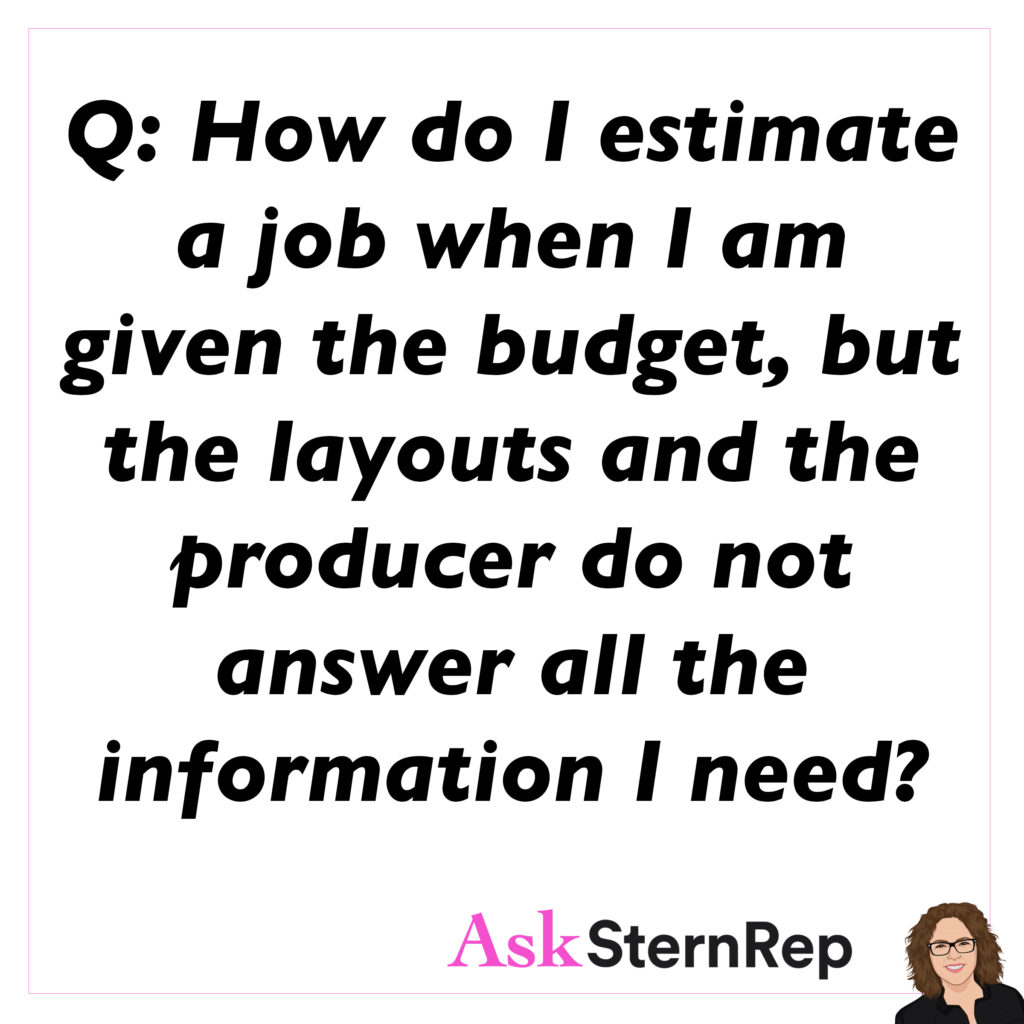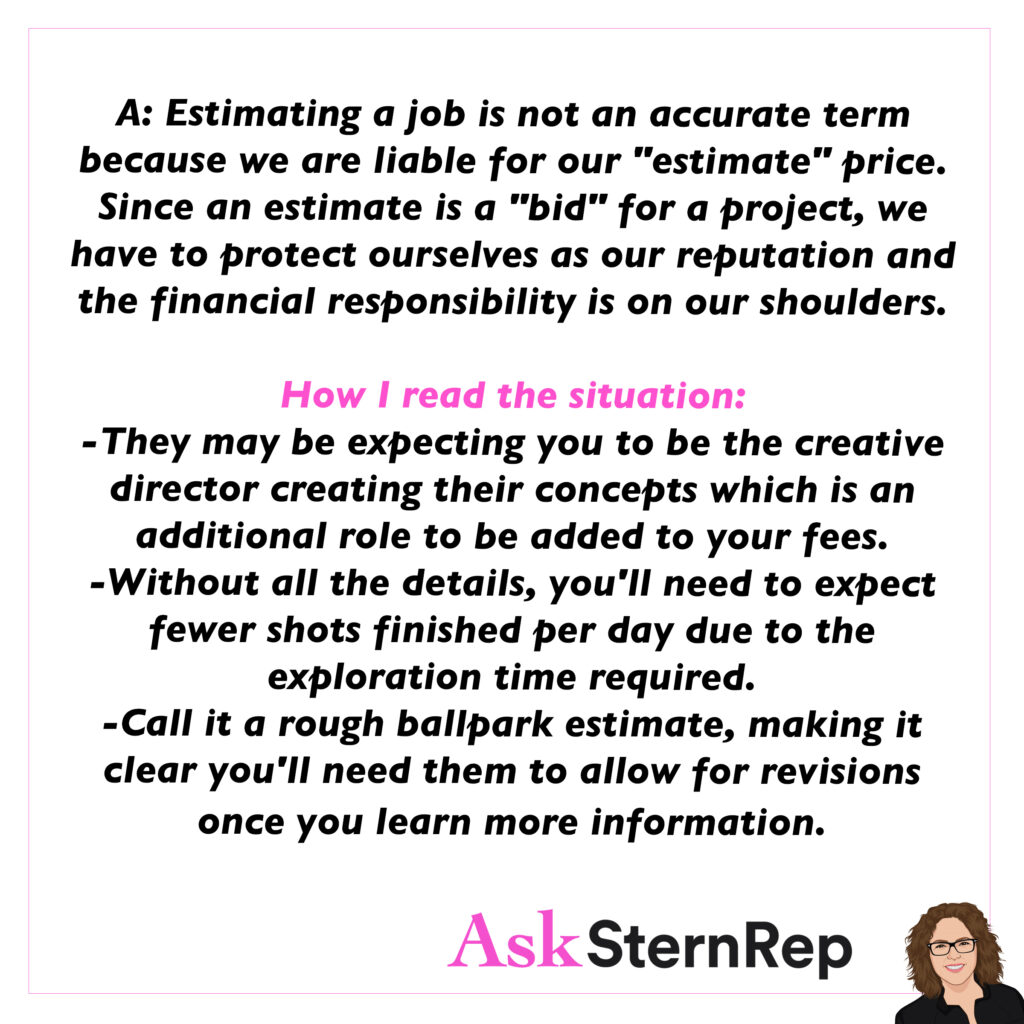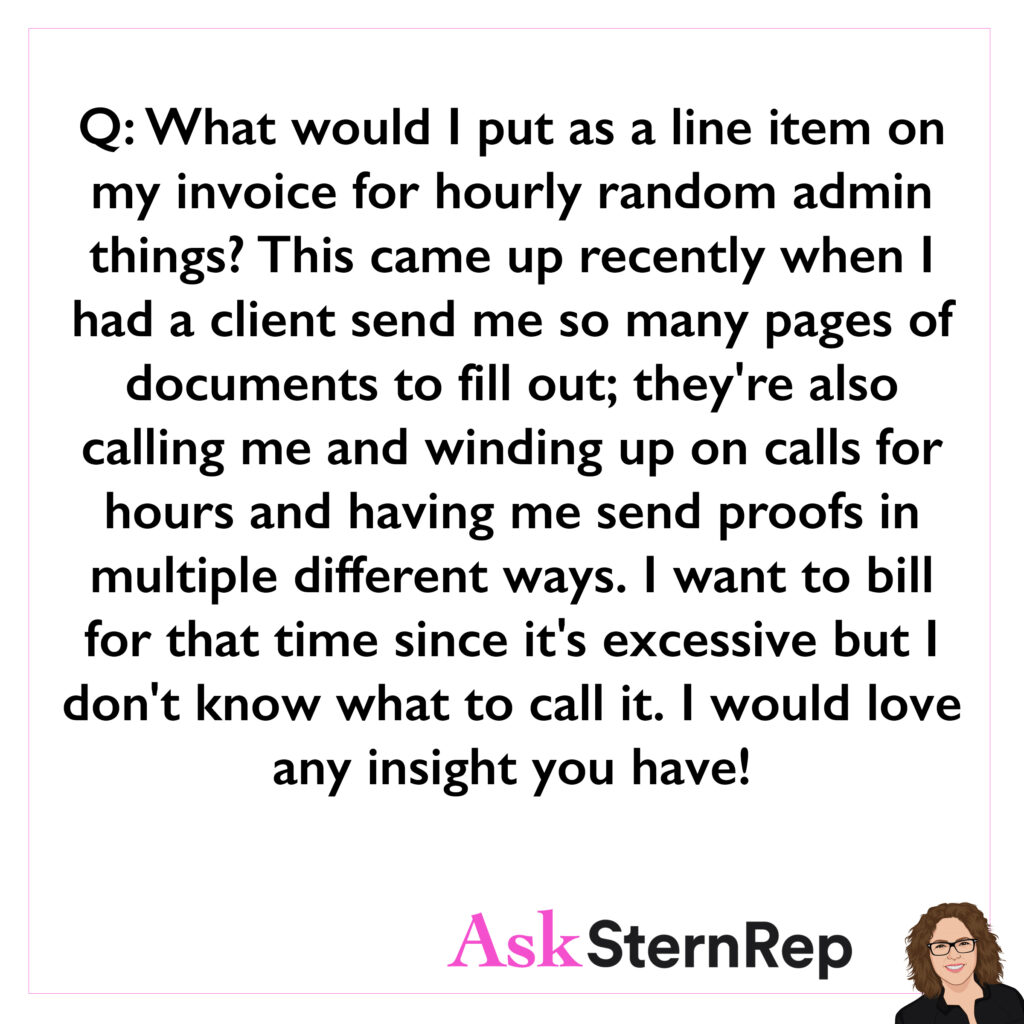
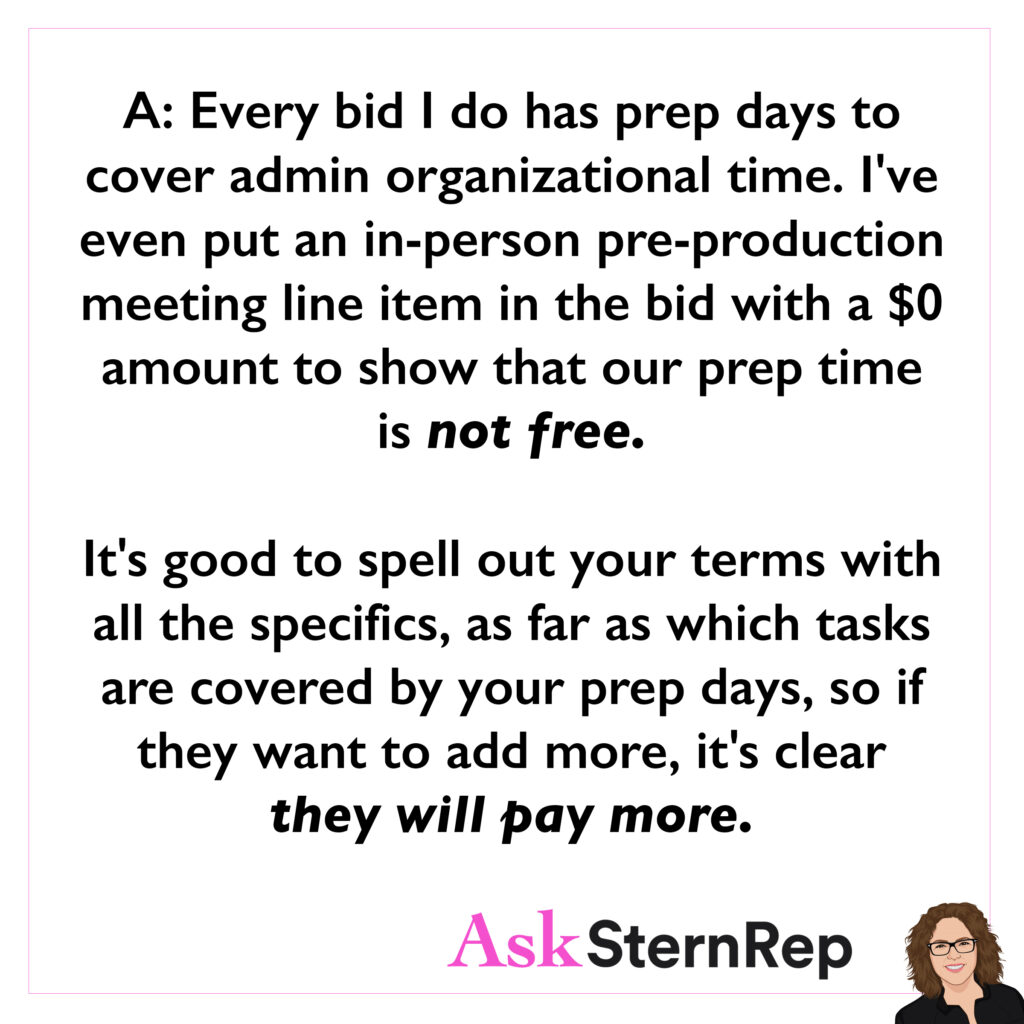
Q:
What would I put as a line item on my invoice for hourly random admin things? This came up recently when I had a client send me so many pages of documents to fill out; they’re also calling me and winding up on calls for hours and having me send proofs in multiple different ways. I want to bill for that time since it’s excessive but I don’t know what to call it. I would love any insight you have!
A:
Every bid I do has prep days to cover admin organizational time. I’ve even put an in-person pre-production meeting line item in the bid with a $0 amount to show that our prep time is not free.
It’s good to spell out your terms with all the specifics, as far as which tasks are covered by your prep days, so if they want to add more, it’s clear they will pay more.

